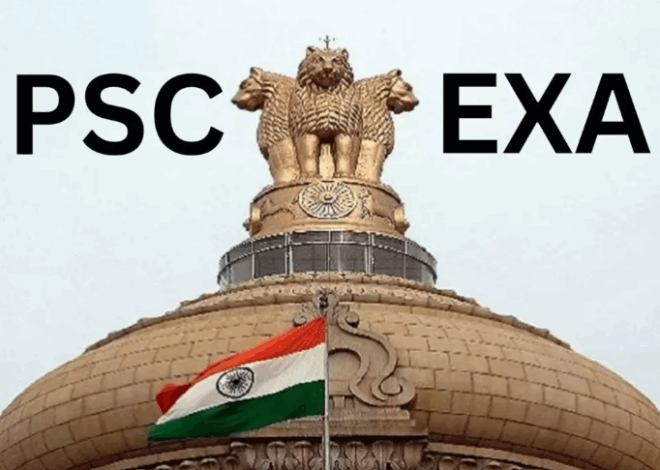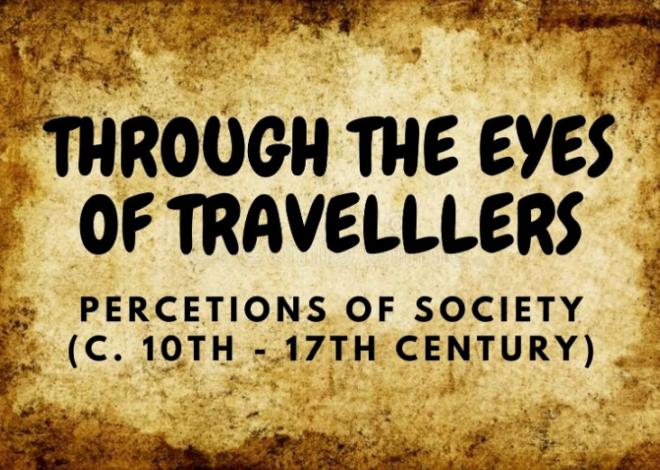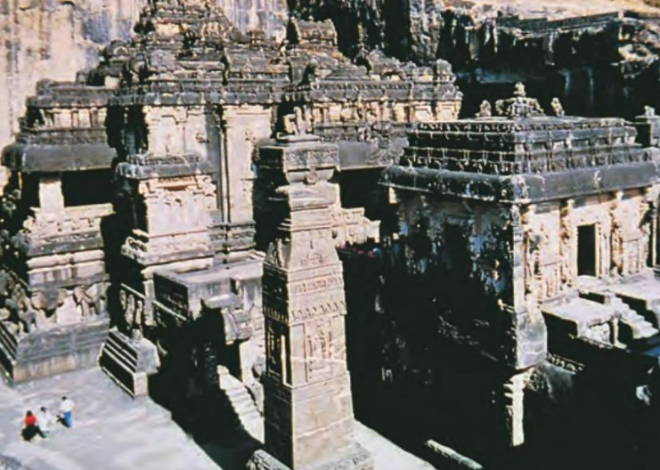
Kings Farmers and Towns (600 BCE- 600 CE): Early States in India
After the end of harappan civilization, there was the absence of any new settlement in that region. After 1500 years, some developments occured in some parts of the subcontinent with the new settlements. New kingdoms with the powerful kings emerged. This was also the time period in which The Rigveda was composed. Now, the megaliths (stones bigger in size) were used to dispose the dead person and to mark the place where he/she is buried.
From 600 BCE, major developments seen in the subcontinent were:
- Emergence of early states, kingdoms, cities, towns and chiefdoms
- Use of iron
- Emergence of coins
- And the emergence of two religions: Buddhism and Jainism
Archaeologists reconstructed the history of this time period through various sources:
- Inscriptions (the study of inscriptions is known as epigraphy)
- Texts
- Coins
- Sculptures
- And other visual remains
Sixteen Mahajanapadas

6th century BCE was the turning point in the Indian history as the major developments were seen during this time. Mahajanapada consists three words- Maha (large), Jana (people) and Pada (foot). Hence, mahajanapada means that the place where a large number of people sets their feet or settled down. There were sixteen mahajanapadas recorded by historians were:
- Gandhara
- Kuru
- Panchala
- Magadha
- Koshala
- Avanti
- Vajji
- Kashi
- Matsya
- Malla
- Kamboja
- Anga
- Chedi
- Vanga
- Shurasena
- Ashmaka
Mostly in many mahajanapadas, more than one ruler used to rule the territory, they all were collectively known as Rajas and those mahajanapadas were known as Ganas or Sanghas. Both Mahavira and Buddha belonged to these ganas or sanghas. Each mahajanapada had its own capital city which was fortified from all the sides to ensure security of the city.
During 6th century BCE, Brahmanas started to compose a text known as Dharmasutras, mainly composed of the norms for rulers who were expected to be Kshatriyas. According to Dharmasutras, main job of a ruler is to collect tax from their subjects. At that time, even raids on neighbouring states or kingdoms were considered as the legitimate or the right way to aquire wealth.
Magadha: The most powerful Mahajanapada
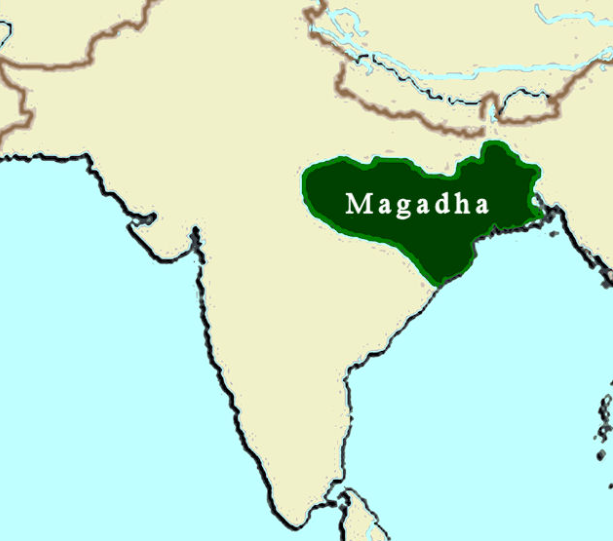
Magadha was one of the sixteen mahajanapadas which emerged as the most powerful one. It was spreaded from Bihar to some parts of Jharkhand and West Bengal. The reasons behind the strength and the rise of Magadha as a powerful mahajanapad were:
- Agriculture was productive
- Iron mines (iron mainly used to make tools and to export to gain profit)
- Elephants were the important part of army and the elephants were available in abundance in the forest regions of Magadha
- Ganga and its tributaries were proved to be the cheapest, easiest and the fastest means of communication
Not only these factors but also he kings palyed a vital role in the development of such a powerful kingdom. Some of the powerful rulers of Magadha were:
- Bimbisara
- Ajatsatru
- Mahapadma Nanda
The Mauryan Empire
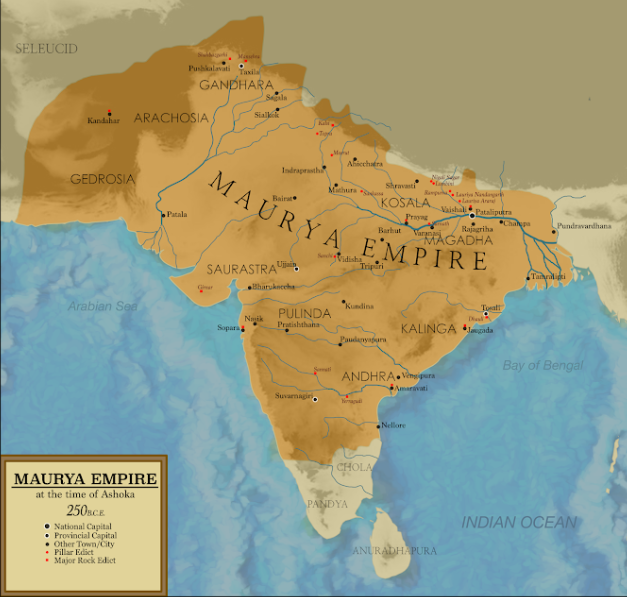
During 4th century BCE, Chandragupta Maurya founded the Mauryan empire. He established an empire which almost covered the whole part of the country and Magadha became a small part of this empire. This empire was extended to Afghanistan and covered the Northern region of India. Asoka, a very famous ruler, who was the grandson of Chandragupta Maurya conquered the region of Kalinga (in present day Orissa).
We got to know about the history of Mauryan empire with the help of various sources. Some of them are:
- Account of Megasthenes who was the Greek ambassador in the court of Chandragupta Maurya
- A text called Arthashastra either composed by Kautilya or Chanakya
- Through Buddhist, Sanskrit, Jaina and Puranic literature
- Asokan inscriptions on rocks and pillars which used to propagate the message of Dhamma
Some of the messages and ideas recorded by Asokan inscriptions that were propagated as Asokan Dhamma were:
- Respect for elders
- Being generous to Brahmans
- Being kind towards slaves and servants
- Respect for all the religions and traditions
Political administration of this empire was really good that’s why it was the most prosperous empire. The capital city of the Mauryan empire was Patliputra. There were many other political or provincial centres too like Ujjayini, Taxila, Tosali and Suvarnagiri.
All these centres were located at the strategic locations like Taxila and Ujjayini provided the long distance trade route while Suvarnagiri had gold mines. It was kind of impossible to maintain uniformity within such a large territory. That’s why, there were some places that were under the direct rule of the ruler while some were indirectly controlled by rulers (by appointing lords for the specific regions).
From the Megasthenes record, we got to know about the importance of army. In the Mauryan empire, there were six sub-committees to coordinate the military activities. These sub committees were:
- First one was responsible for the navy
- Second sub committee was responsible for the arrangement of transport and other provisions while travelling through land route
- Third one was responsible for the entertainment of foot soldiers
- Fourth for horses
- Fifth one for chariots
- Last sub commitee used to be responsible for elephants (as elephants were the main component in the army, especially during war).
The history of this empire was reconstructed through the stone sculptures and the Asokan inscriptions found in 19th and 20th century. This empire was both challenging and exciting. From 2nd century BCE, many chiefdoms and kingdoms emerged in many parts of the subcontinent.
New Kingdoms and Chiefdoms
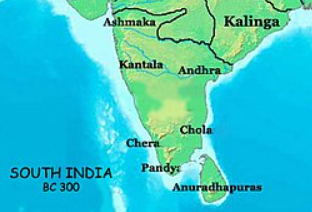
By the 2nd century BCE, new kingdoms were seen in the deccan and the southern region of India. Some chiefdoms also emerged in Tamilakam region (present day Tamil Nadu, Kerala and some parts of Karnataka and Andhra Pradesh). There were three chiefdoms flourished in this region and those were Cholas, Cheras and Pandyas. These chiefdoms were prosperous and stable.
Basic difference between the kingdom and a chiefdom is kingdoms were larger in size and ruled by a single ruler known as king while chiefdoms were comparatively smaller in size and ruled by chief. Tamil Sangam Literature which contains poems about chiefs helped a lot to reconstruct the history of this region. Other kingdoms were:
- Satavahanas ruled over the western and central India during 2nd century BCE to 2nd century CE. Stavahana rulers used to claim special social status.
- Shakas were of central Asian origin who established their empire in the North-Western parts of the country. Most of iis revenues came from long distance trade.
Divine Kings
High status could be claimed by using the name of deities or to show themselves as of divine origin. Best example can be seen in Kushana period (1st century BCE to 1st century CE). Kushana rulers used a title ‘devaputra’ or the “son of god” to denote themselves.
Something similiar was noticed in the Chinese empires too where the rulers used the titles meaning “son of heaven” to establish their power over their subjects. Its history was reconstructed by the coins and sculpture found at excavations. First coins were emerged during this time period.
By the 4th century CE, a new empire emerged known as the Gupta empire. This empire was depended on samantas. Samantas were the lords appointed by the ruler to rule over the given territory and they used to provide military help to the ruler during the times of war. The history of Gupta empire was reconstructed through various sources such as:
- Texts and Literature
- Inscriptions and Sculptures
- Gold coins (best quality of gold coins in the Indian history were used in the Gupta empire)
- Prashastis or pillar inscriptions
The Prayaga Prashasti is the most famous pillar inscription, also known as Allahabad Pillar Inscription. It contained the message written in Sanskrit. It was composed by Harisena who was the poet in the court of most powerful Gupta ruler, Samudragupta.
A changing countryside

Archaeologists got so many inscriptions which gives us the insight of the lives of rulers but do not tell us about the lives of ordinary people. But we got some information about the lives of ordinary people through the Jatakas and Panchatantra stories. These stories were transmitted orally through various generations which were later written down during 500 BCE.
One of the famous story which gives us the insight of ordinary people is Gandatindu Jataka. In this story, there was a wicked king who used to suppress his subjects desires and demanded for high tax. There were two ways adopted by ordinary people to escape from this situation: they either used to migrate towards forests (maybe, rulers had no or less authority in the forest areas) or they adopted the ways to increase production (so that they could pay tax).
The way of inscreasing production was mainly adopted by the people living in the parts of Ganga and Kaveri valley from 5th century BCE. Firstly, they shifted towards plough agriculture and the second strategy adopted by them was transplantation (once the crop grows a little bit, it was then transplanted into the more fertile area).
Hence, the plough was adopted in many parts of the country but in Punjab and Rajasthan, people didn’t adopt it till the 20th century. Mostly, in Indian history, hoe was used to plough the field and the fields were irrigated through wells, tanks and canals. Although, benefits were uneven which led to the differences in the rural society.
Differences in rural society
According to Buddhist traditions, the Indian rural society was divided into three categories of people: Large landholders, Small peasants and Landless laboureres. Those who had their own house and land ( small peasants and large landholders) were known as Gahapati in Pali language. Gahapati used to be the man who was the owner of the house and had the control or command over all the resources, servants and other members living in that household.
Tamil Sangam Literature also mentions the three categories of people. These were:
- Large landowners (also known as vellalar)
- Ploughmen or small peasants (uzhavar)
- Slaves (adimai)
Land Grants
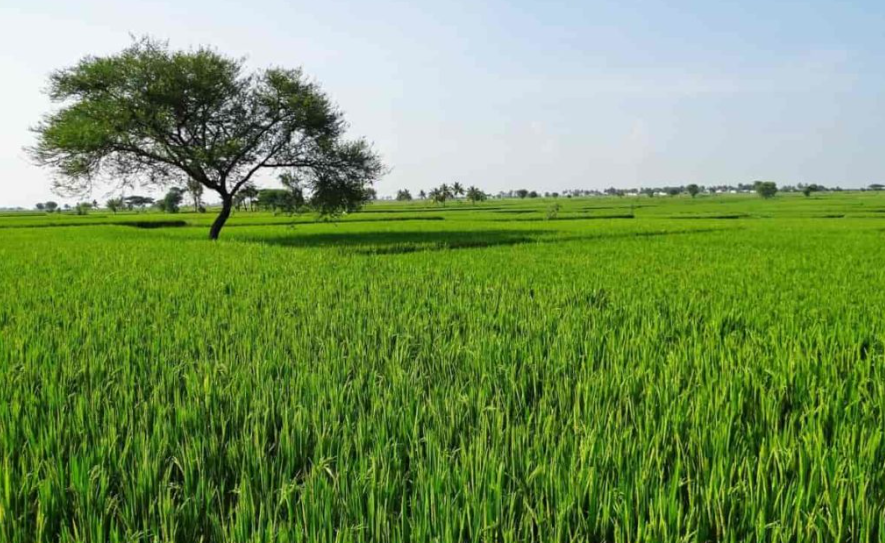
We got information about land grants through various inscriptions either on rocks or on copper plates, initially written in Sanskrit and from the 7th century CE, some part of the whole inscription was written in Sanskrit while the remaining part of it was written in local language.
One of the inscriptions depicting land grants was about Prabhavati Gupta, daughter of Chandragupta II. She got married into an important ruling family of Deccan known as Vakatakas. According to the sanskrit texts, women had no access to property and had no rights over the resources like land area but Prabhavati Gupta did not only have the right over land but she even granted it. Some of the reasons behind this controversy were:
- Prabhavati Gupta was a queen and maybe that’s why she was an exception.
- Maybe, the norms written in Sanskrit texts were not uniformly applicable in every part of the country.
Once a king used to grant a land, the villagers or ordinary people had to obey the orders of their new lord. Even all the dues were paid to the new lord. Different sizes of lands were donated. Reasons behind land grants were:
- To extend agriculture (if the ruler grants an uncultivable land to someone, that person will probably try to turn it into cultivable land. Hence, more productive the land, more revenue the king will get).
- If the king’s political power is weakening, then they used to grant land to strengthen or to re-establish their power.
- Last but not the least, to show themselves more powerful and supreme.
The land granted to Brahmana was known as agrahara. Brahmanas had excessive rights over land granted by rulers to them. They were not forced to collect the tax only to repay it to the rulers.
Towns and Trade
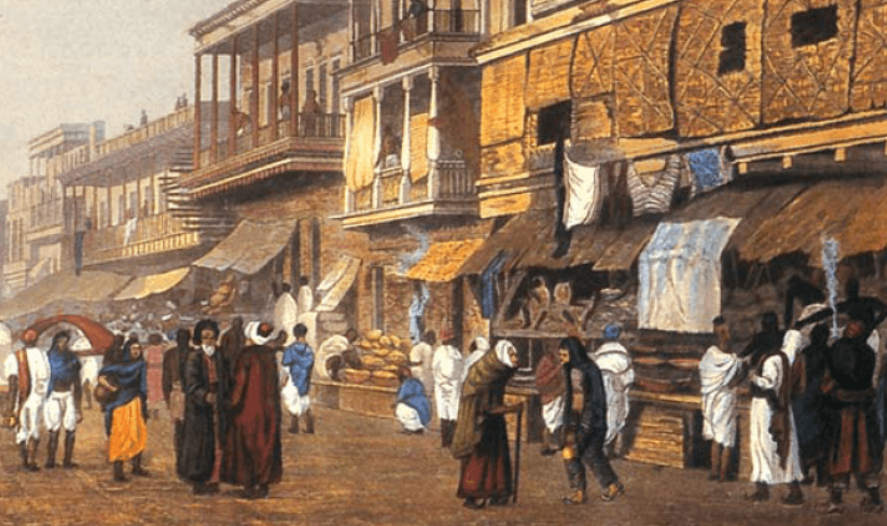
From 6th century BCE, new towns started to emerge in different parts of the subcontinent which were established on the strategic locations such as:
- Patliputra on riverine routes
- Ujjayini on land routes
- Puhar facilitated sea routes
- And Mathura emerged as the cultural, commercial and political centre
Cities in which the ruling elites and kings used to live were fortified. Many artefacts were found at excavations from these cities. Such as bowls and dishes with shiny finishing, also known as Northern Black Polished Ware. Some ornaments, vessels, tools, weapons and materials made up of gold, copper and silver were also found.
By 2nd century BCE, votive inscriptions were found. Votive inscriptions contained the record of gifts given to religious institutions. These votive inscriptions contained the name and occupation of the donor. These inscriptions also tells us about the ordinary people living in those towns. People were categorised into different categories according to their occupation like goldsmiths, blacksmiths, carpenters, etc.
By the 6th century BCE, land and river routes were important for trade. By land routes, we used to trade with Central Asia and by sea routes:
- By Arabian sea, we used to trade with West Asia and East and North Africa.
- By Bay of Bengal, we used to trade with Southeast Asia and China.
Traders used to travel by foot or by bullock carts while travelling through land but it used to take too much time and the travellers used to carry fodder for the bulls.That’s why, the traders and merchants preferred sea routes the most. Successful merchants were known as Masattuvan in Tamil while setthis and satthavahas in Prakrit language).
Coins and Kings
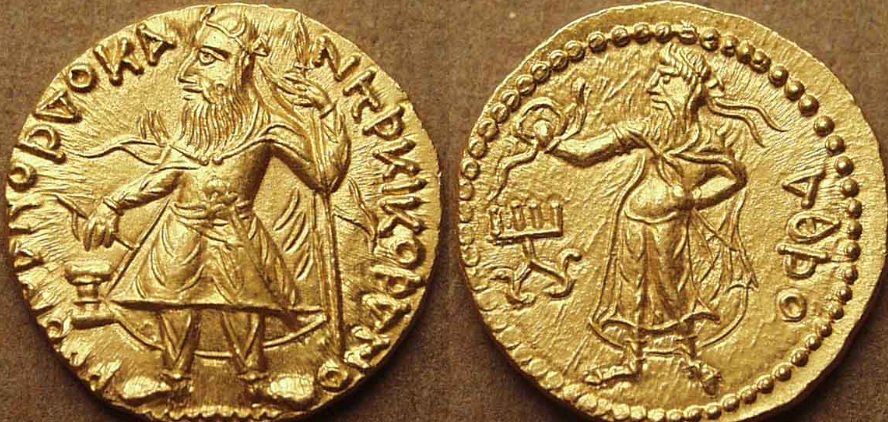
In the Indian history, during 6th century BCE, Punch marked coins made up of silver and copper replaced the barter system. Not only kings but also merchants, bankers, traders and townspeople could issue the new coins. Now, coins became the means of transaction.
Kushana rulers were the first to introduce gold coins during 1st century CE while the best quality of gold coins were seen during the period of Gupta rulers. These coins were identical in weight with Roman and Parthian coins which helped to facilitate easy trade. Coins with the names and images of rulers were introduced by Indo-Greek rulers during 2nd century BCE.
Even the tribal people introduced their own coins . For example, Yaudheyas tribe of Punjab and Haryana introduced thousands of copper coins of their own. These coins used to facilitate trade with other empires. India used to export spices, especially pepper to the Roman empire and the coins made this trade even easier.
How were these inscriptions deciphered?
The inscriptions found at excavations were in Brahmi and Kharosthi script. Although, the language was same, that is, Prakrit. Most of the Asokan inscriptions were written in Brahmi script. To decipher this script, European scholars with Indian pandits compared this script with the Bengali and Devanagari script. And finally, in 1938, James Princep was able to read this script.
Kharosthi inscriptions were found in the noth western region of the subcontinent. Kharosthi script was seen in the Indo-Greek coins. James Princep was the one who deciphered this script too. He was familiar with the Greek language and he compared the greek and kharosthi script used on the coins and finally he became successful in deciphering it.
Through these inscriptions, we got toknow that the most famous and powerful ruler Asoka was also known as “Piyadassi” and “Devanamapriya”.
Limitations of Inscriptions
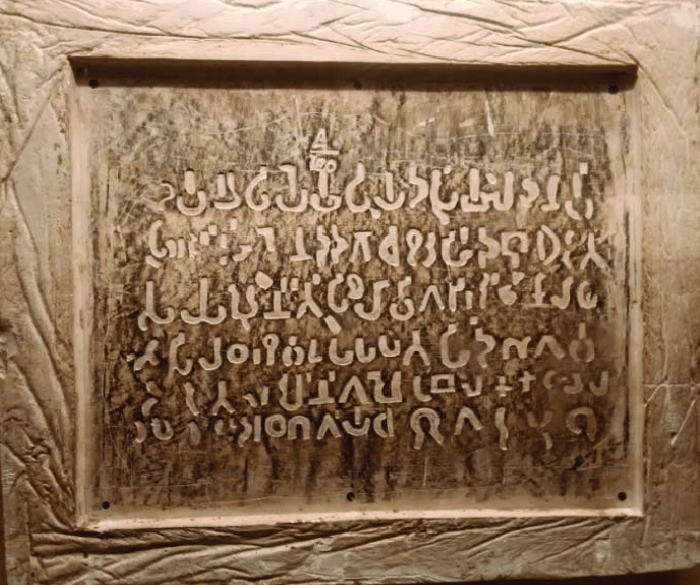
Inscriptions are the most important source to reconstruct the history of any timeline. But because of its limitations, there are many problems Archaeologists and historians faced to read the inscriptions. Some of these are:
- Letters are faintly engraved, that’s why, tahy were hard to read
- Some parts of the inscriptions were damaged
- Letters were missing
- We were not sure about the exact meaning of the message conveyed in the inscriptions
- These inscriptions doe not give us the insight of the lives of ordinary people
Late nineteenth and twentieth century scholars were interested in the history of kings. Scholars of mid twentieth century were interested in social groups and economy of the early states. While from the last decade, scholars got interested in the lives of marginalised groups.
More historical articles:

